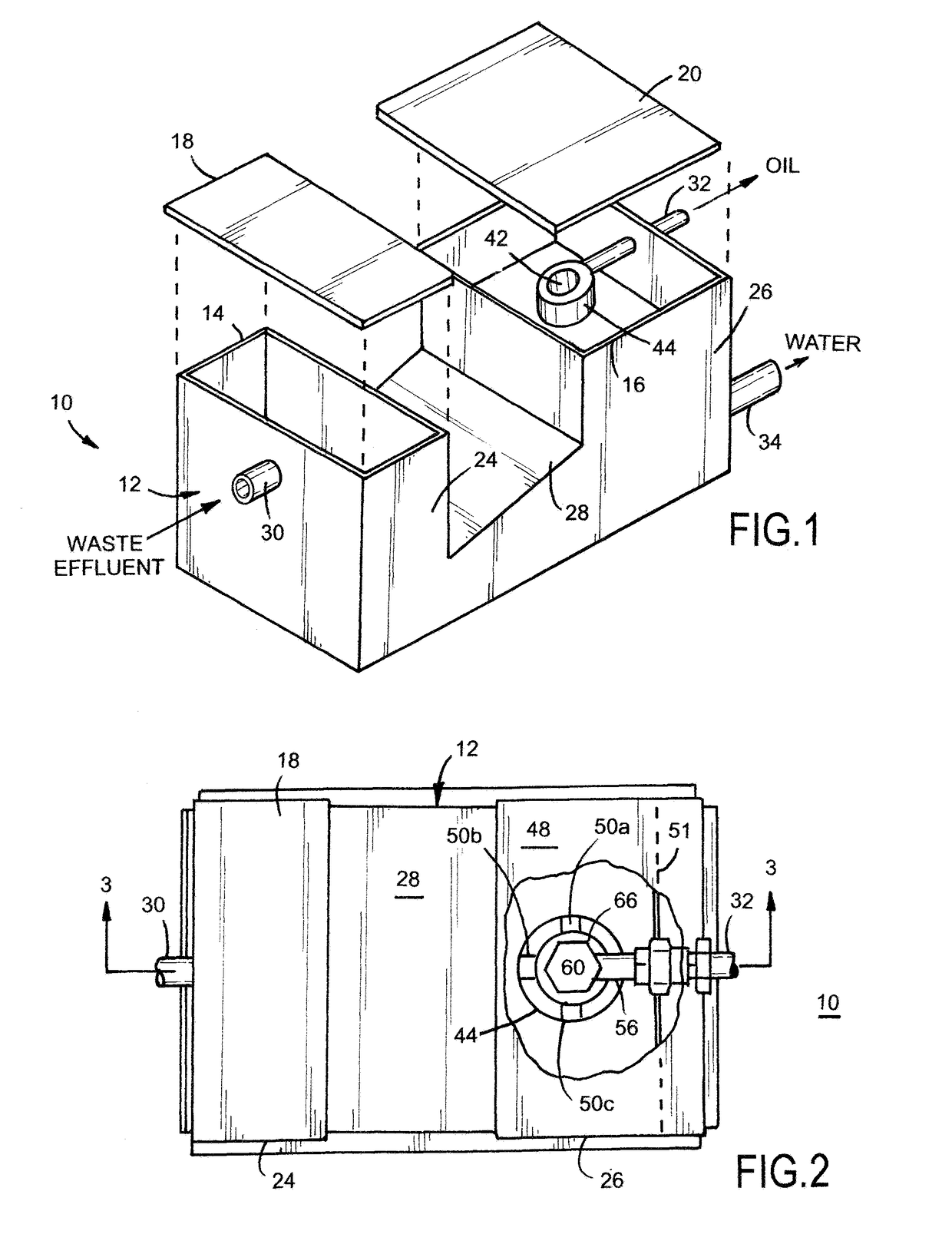Immiscible liquid separator for marine vessels
a liquid separator and marine technology, applied in the field of apparatus, can solve the problems of inability to operate, degrade the operation of the separator unit, and blockage, and achieve the effect of efficient expulsion
- Summary
- Abstract
- Description
- Claims
- Application Information
AI Technical Summary
Benefits of technology
Problems solved by technology
Method used
Image
Examples
Embodiment Construction
[0025]With reference to FIGS. 1-4, there is illustrated an immiscible liquid separator system adapted for marine use, i.e., use on a marine vessel, or the like. The illustrated immiscible liquid marine separator unit 10 is constructed according to one embodiment of the invention. The immiscible liquid separator 10 is adapted for separating immiscible liquids, such as oils and water commonly produced in food processing facilities. The immiscible liquid separator 10 comprises an enclosure 12 having two open tops 14 and 16 covered by respective lids 18 and 20. The lids 18 and 20 are shoe-box type lids sealed to the rims of the open tops 14 and 16 by neoprene seals. The lids 18 and 20 can be fastened to the enclosure 12 by clips or other quick release fasteners. The immiscible liquid separator 10 also includes a planar bottom 22 adapted for resting on a floor of the vessel or ship. The various side, bottom and lids can be constructed of stainless steel, synthetic or other suitable mater...
PUM
| Property | Measurement | Unit |
|---|---|---|
| specific gravity | aaaaa | aaaaa |
| specific gravity | aaaaa | aaaaa |
| specific gravity | aaaaa | aaaaa |
Abstract
Description
Claims
Application Information
 Login to View More
Login to View More - R&D
- Intellectual Property
- Life Sciences
- Materials
- Tech Scout
- Unparalleled Data Quality
- Higher Quality Content
- 60% Fewer Hallucinations
Browse by: Latest US Patents, China's latest patents, Technical Efficacy Thesaurus, Application Domain, Technology Topic, Popular Technical Reports.
© 2025 PatSnap. All rights reserved.Legal|Privacy policy|Modern Slavery Act Transparency Statement|Sitemap|About US| Contact US: help@patsnap.com



